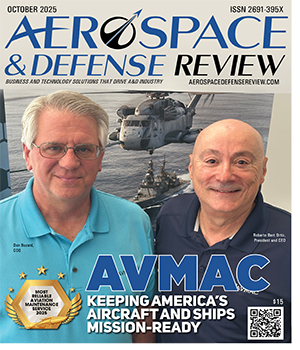THANK YOU FOR SUBSCRIBING
 John Kohut, CEO
John Kohut, CEOYet this very strength brings a critical weakness. Centralized systems can become single points of failure, tempting targets for adversaries determined to disrupt operations. GALT Aerospace was founded to help solve this vulnerability.
GALT specializes in warfighter-focused solutions for military aviation and airborne systems, strengthening capabilities through resilient communication architectures, seamless network integration and rapid technology deployment.
Rather than relying on central hubs, GALT decentralizes command and control, pushing decision-making closer to the edge. This enables faster responses in dynamic combat environments and keeps operations running even if central command is compromised.
“Modern warfare requires agility and resilience at every node,” says John Kohut, CEO. “GALT Aerospace is contributing to distributed C2 capabilities through increased tactical network interoperability and advanced “sensor-to-weapon” technologies that increase operational tempo and eliminate single points of failure.”
 First, GALT has addressed critical weaknesses in traditional stovepipe military networks built around specific platforms that don’t share data across domains. GALT’s airborne gateway systems integrate radios and networks to create an interoperable foundation for distributed operations. These airborne nodes translate and route data across tactical targeting networks, common data links and legacy systems, creating a smooth, decentralized flow of information. Warfighters gain shared situational awareness and make faster decisions without routing everything through central command. In contested environments, this keeps forces connected when adversaries target central nodes.
First, GALT has addressed critical weaknesses in traditional stovepipe military networks built around specific platforms that don’t share data across domains. GALT’s airborne gateway systems integrate radios and networks to create an interoperable foundation for distributed operations. These airborne nodes translate and route data across tactical targeting networks, common data links and legacy systems, creating a smooth, decentralized flow of information. Warfighters gain shared situational awareness and make faster decisions without routing everything through central command. In contested environments, this keeps forces connected when adversaries target central nodes.
GALT demonstrated airborne gateway functionality under fused integrated naval network (FINN). This rapid technology demonstration program tests new connectivity technologies in operationally relevant airborne environments on a four-to-six-month cycle. After building tremendous credibility in airborne networking, GALT faced off against major defense contractors to win the Marine Corps Skytower II airborne network extension (ANE) program under Marine UAS Expeditionary (MUX) Medium Altitude Long Range (MALE). GALT’s agile yet disciplined engineering and integration have rapidly moved SkyTower II from development to flight test and production. It is anticipated that variants of SkyTower II will support the Joint Services and Coalition partners soon.
-
Modern warfare requires agility and resilience at every node. GALT Aerospace is contributing to distributed C2 capabilities through increased tactical network interoperability and advanced “sensor-to-weapon” technologies that increase operational tempo and eliminate single points of failure
True Software Radios use General-Purpose Processors (GPP), like those in desktop or laptop computers, to perform complex waveform signal processing. This enables the key processing characteristics to be defined in software using standard computer languages like C++ or Python. The problem in the past and with most current radio manufacturers, is that GPPs do not have sufficient speed and their multitasking operating systems are not sufficiently deterministic to perform precise, timing-dependent waveform processing.
Researchers at the Air Force Research Laboratory (AFRL) in Rome, New York, thought the time and technology finally came to achieve Software Radios. They created promising prototypes and GALT identified a critical application, weapons data links, that would accelerate a path to deployment. Through an AFWERX direct-to-Phase II Small Business Innovation Research (SBIR) contract, GALT engineered small and highly adaptable software radios for weapons and autonomous vehicles. Maturing this technology to achieve an order-of-magnitude cost reduction while increasing weapon and autonomous vehicle networking capabilities is ongoing with the Services.
Lastly, GALT knows that rapid technology prototyping alone is insufficient for achieving decisive results in combat. Efficient production and effective life-cycle support are critical. Warriors need weapons that they can readily employ and that work. Unlike many prototype shops, GALT develops the logistics and training required to support its systems from the very beginning.
Founded by veterans and with a veteran-forward workforce, GALT has built a culture of trust, respect and operational expertise. This results-driven approach, shaped by solving real-world challenges closely with customers, continues to drive the company forward as it helps build the future of defense.
| Share this Article: |
GALT Aerospace
Company
GALT Aerospace
Management
John Kohut, CEO
Description
GALT Aerospace delivers advanced command, control and communications solutions for defense, specializing in rapid prototyping, open systems integration and secure information architectures. It empowers warfighters with faster, more effective decision-making capabilities.






